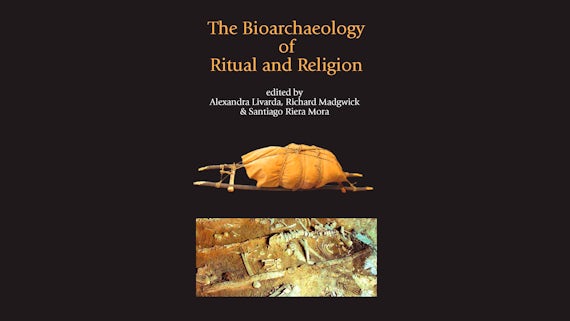Ritual and Religion explored through the lens of organic materials
29 Ionawr 2018

New book co-edited by Cardiff archaeologist examines latest bioarchaeological evidence from across Europe
The Bioarchaeology of Ritual and Religion is the first volume dedicated to exploring ritual and religious practice in past societies from a variety of environmental remains.
Edited by Alexandra Livarda, Richard Madgwick (Cardiff) and Santiago Riera Mora, the book fills a major void in debates surrounding ritual and religion by focusing on animal bones, plant remains and soils. Research on human bone and prestige artefacts has all too often dominated the study of ritual practice in archaeology and this volume provides much needed balance by focusing on these neglected sources of evidence.
Recent years have seen an increased recognition of the under-exploited potential for scientific data from organic remains to provide detailed information relating to ritual and religious practice. Traditionally, research on these materials has focused on functional questions surrounding environment and economy.
This volume explores the diverse roles of organic remains, particularly of animals and plants – in ritual and religion, re-evaluating offerings, sensory or healing mediums, grave goods, and worked artefacts. It also provides insights into how advances in archaeological science can shed new light on the reconstruction of ritual practices.
The collection of fourteen case studies showcases the latest approaches in the investigation of bioarchaeological evidence, and is diverse both temporally (from the Mesolithic to the medieval period) and geographically (from the Mediterranean and Aegean to the North Atlantic regions).
This new volume encompasses a wide range of bioarchaeological sub-disciplines from anthracology to geoarchaeology, palynology and zooarchaeology, including avian bone studies by Cardiff's Julia Best and Jacqui Mulville.
Lecturer in Archaeological Science, Dr Madgwick adds: “The novelty of this volume is in its focus on the value of often marginalised sources of perishable material culture for elucidating ritual and religion in past societies. Research on animals, plants and soils has all too often been confined to discussions or environment and economy. The geographic, temporal and thematic breadth of the papers in this volume demonstrates just how wide-ranging a resource organic remains provide for reconstructing past ritual practices.”
Bioarchaeologist Dr Richard Madgwick specialises in the study of animal remains and employs macroscopic, microscopic and molecular methods. Much of his research focuses on the zooarchaeology of feasting and mobility, and he is currently undertaking research projects including The Dietary Impact of the Norman Conquest and Early Iron Age Feasting in Southern Britain.
The Bioarchaeology of Ritual and Religion is published by Oxbow Books.
